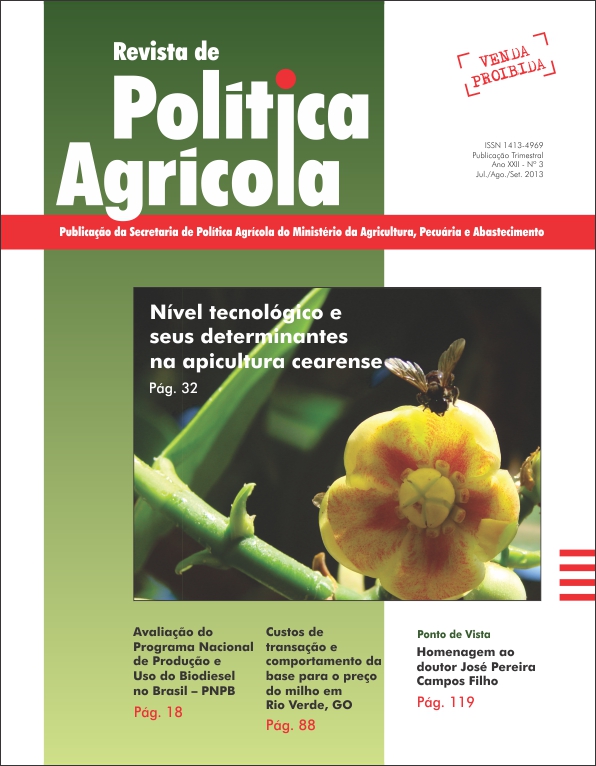Supply of beef cattle in Rio Grande do Sul: tendency, seasonality and production cycles
Keywords:
beef cattle farming, agricultural economics, sheep husbandry, time seriesAbstract
Brazil is one of the largest producers and exporters of meat in the world. A Brazilian state that stands out in livestock raising is Rio Grande do Sul. In this context, this research is intended to comparatively analyze the supply of beef cattle in Rio Grande do Sul, by means of tendency, seasonality and production cycles of bovine and sheep meat from 2000 to 2011. The research was based on collection of data related to monthly slaughter of cattle and sheep from August 1999 to June 2012. Statistical analysis of data followed the classical multiplicative time series model. Results showed an upward trend in the supply of beef cattle in Rio Grande do Sul in the analyzed period. Comparatively, the sheep market had a higher production growth in the period, with positive annual growth rate of 4.92%, while the bovine meat market grew 3.6% annually. The sheep market showed a more pronounced seasonality, characterizing specific periods of crop and no-harvest season. The production cycles of cattle market were more regular and well-defined in the long term, with an average length of 2 to 3 years, due to better structure of production, constant demand and supply, and lower seasonality of supply.Downloads
How to Cite
Viana, J. G. A., Dorneles, J. P., & Moraes, M. R. E. de. (2015). Supply of beef cattle in Rio Grande do Sul: tendency, seasonality and production cycles. Revista De Política Agrícola, 22(3), 6–17. Retrieved from https://rpa.sede.embrapa.br/RPA/article/view/762
Issue
Section
Artigos Científicos


